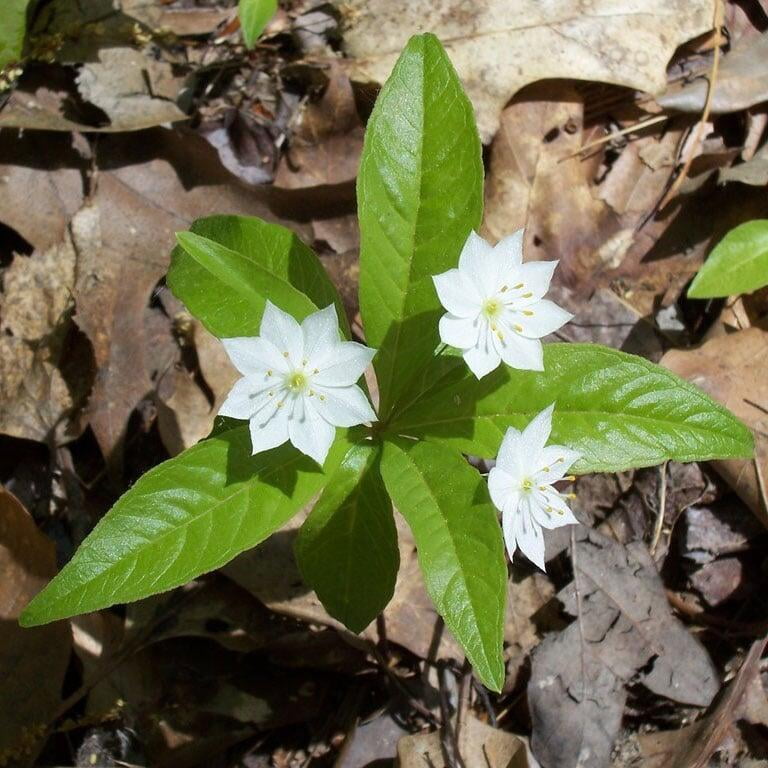Lysimachia borealis
Starflower Description:
Lysimachia borealis, commonly known as boreal loosestrife or starflower, is a perennial plant that belongs to the Primulaceae family. It is native to North America and is found growing in moist to wet soils, such as along the edges of streams, swamps, and wet meadows.
The plant typically grows to a height of 4-8 inches and spreads to form a dense mat of foliage. It has oval, glossy green leaves that grow up to 2 inches (5 cm) long and are arranged in opposite pairs along the stem. The stem is typically smooth and reddish-brown in color.
In late spring to early summer, Starflower produces clusters of small, star-shaped, bright yellow flowers that are about 0.5 inches (1.3 cm) in diameter. The flowers are arranged in a loose terminal raceme that can be up to 6 inches (15 cm) long. The nectar-rich flowers are particularly attractive to bees and other pollinators.
Starflower is a popular garden plant and can be grown in moist to wet soils in partial shade to full shade. It is a good choice for naturalized areas, rock gardens, and woodland gardens, as well as for groundcover in shaded areas.
Native Range:
Starflower is found mostly in Minnesota's Northern regions, but can also be found in the far Southeastern parts as well. More broadly, Starflower is found in the Northeastern portions of the United States including Wisconsin, Michigan, as well as the more traditional Northeastern states such as Maine.
Standard Plant Information:
Plant Height: 4" - 8" inches
Bloom Time: May - June
Preferred Habitat: Does well in part shade to shade and is often found in moist, rich woods.
Sowing:
For most homeowners, the best option is to scatter seed on the ground by hand broadcasting at a minimum of 16-64 pls ounces per acre. For even coverage, we recommend that you broadcast seed in perpendicular rows across the site to ensure even coverage.
You’ll want to broadcast any grass seed first, which will get raked into the soil lightly. Next, it is ideal to mulch the area lightly with either a clean (no seed) straw or preferably with our native Little Bluestem straw, sold at our retail garden centers. After a light mulching is complete, now it’s time to broadcast your native wildflower seeds, which should not be raked into the soil. A good rain or watering is sufficient to cover the seed.
Planting:
Simply dig a hole in the soil slightly larger than the plant’s roots. Ensure that the soil line of the plant is maintained during the transfer (i.e. the plant should be at the same level with the ground as it was in the pot). Pack any loose dirt back around the plant and make sure you water it well the same day to ensure it has the best chance of survival.








